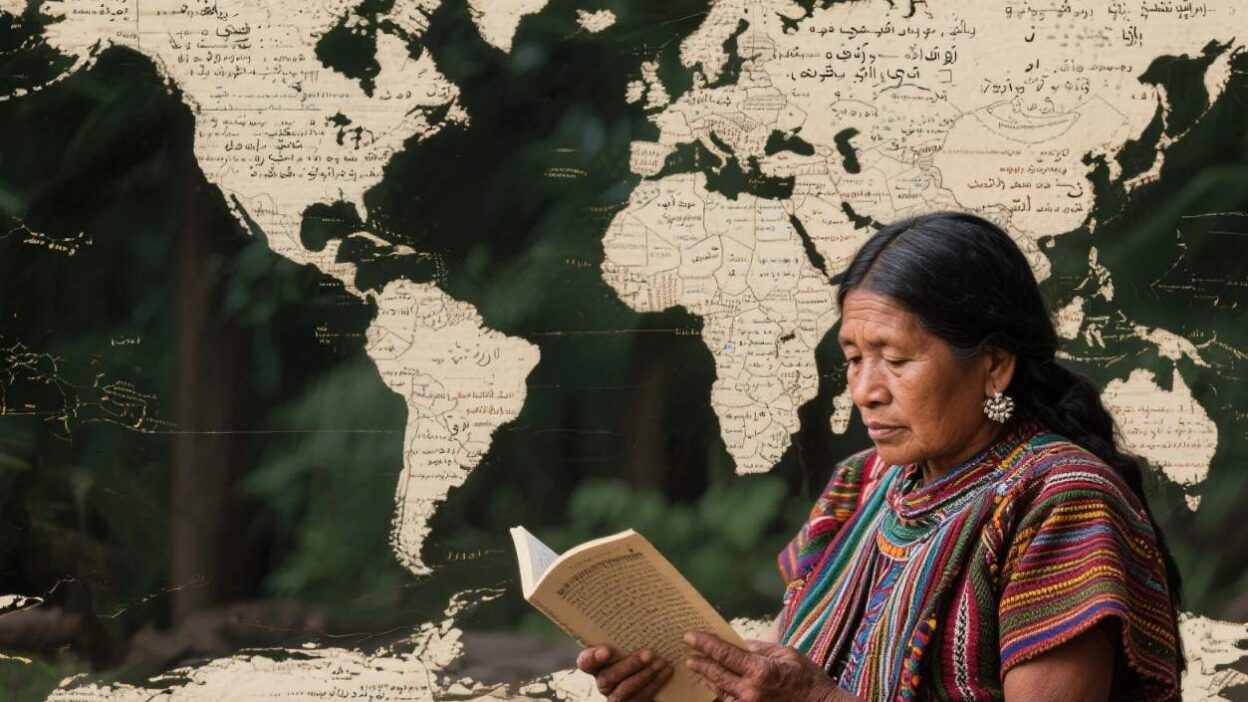Preserving Humanity’s Linguistic Tapestry
The Silent Erosion of Human Expression
Language is the soul of a culture—a vessel for history, identity, and collective memory. Yet, every two weeks, a language vanishes forever, taking with it unique ways of seeing the world, storytelling traditions, and ancestral knowledge. Today, over 40% of the world’s 7,000+ languages are endangered, with fewer than 1,000 speakers remaining for many. This crisis threatens not just diversity but the very fabric of human experience. Enter the Global Digital Library of Endangered Languages (GDLEL): a visionary initiative to digitize, preserve, and revitalize these languages before they disappear. By merging cutting-edge technology with community-driven stewardship, this project aims to transform endangered languages from relics of the past into living, accessible tools for future generations.
The Crisis: Why Endangered Languages Matter
Endangered languages are not just “old dialects”—they are repositories of irreplaceable knowledge. Indigenous languages, for example, often encode ecological wisdom (e.g., medicinal plant uses, climate patterns) passed down for millennia. They also reflect distinct worldviews: the Inuit’s 50+ words for snow, or the Maori concept of kaitiakitanga (environmental stewardship), offer insights no single dominant language can capture.
The drivers of endangerment are complex but interconnected:
- Colonialism and Globalization: Historically, colonial powers imposed their languages (e.g., English, Spanish) to centralize power, marginalizing local tongues. Today, global media and trade further marginalize smaller languages.
- Urbanization: Younger generations, seeking economic opportunities, often abandon native languages for dominant ones.
- Lack of Documentation: Many endangered languages exist only in oral form, with no written records, making preservation urgent.
Without intervention, these languages—and the cultures they sustain—will fade into obscurity.
What Is the Global Digital Library of Endangered Languages?
The GDLEL is a decentralized, open-access platform designed to digitize, catalog, and share endangered languages. Unlike traditional archives, it is not just a repository but a living ecosystem that prioritizes accessibility, interactivity, and community ownership. Its core components include:
1. Digitization of Oral and Written Materials
- Oral Histories: Using high-quality audio/video recording and AI-powered speech-to-text tools, the library captures spoken languages, preserving nuances like tone, rhythm, and dialect.
- Manuscripts and Artifacts: Scanning rare documents (e.g., ancient scrolls, community ledgers) and digitizing them ensures physical copies are preserved even if originals degrade.
2. Metadata and Contextualization
Every entry in the library includes rich metadata:
- Linguistic Data: Grammar rules, vocabulary lists, and phonetic transcriptions.
- Cultural Context: Stories, songs, and rituals tied to the language, explained by native speakers.
- Geospatial Information: Mapping where the language is (or was) spoken, linking it to cultural landmarks.
3. Accessibility and Interactivity
The library is designed for global use, with features like:
- Multilingual Interfaces: Users can search and browse in their preferred language.
- Interactive Tools: Language games, pronunciation guides, and translation apps make learning engaging.
- Community Hubs: forums and virtual workshops where speakers, learners, and researchers collaborate.
4. Decentralized Governance
Owned and governed by a consortium of Indigenous groups, linguists, and technologists, the library ensures that communities retain control over their linguistic heritage. Decision-making is guided by principles of equity, consent, and cultural sensitivity.
How It Works: Technology and Collaboration
Building the GDLEL requires a blend of cutting-edge tech and grassroots engagement:
1. Technological Foundations
- AI and Machine Learning: Tools like Google’s Speech-to-Text and MediaPipe automate audio transcription, while NLP models analyze grammar and syntax to build comprehensive dictionaries.
- Blockchain for Preservation: Blockchain’s immutability ensures that digitized materials cannot be altered or lost, creating an unbroken chain of custody.
- Cloud Infrastructure: Secure, scalable cloud platforms (e.g., AWS, Google Cloud) host the library, ensuring global accessibility.
2. Community-Led Documentation
Indigenous communities are at the heart of the project. Linguists partner with native speakers to:
- Record Oral Traditions: Elders share stories, songs, and rituals, which are transcribed and annotated with cultural significance.
- Validate Data: Communities review digitized materials to ensure accuracy and cultural appropriateness.
3. Partnerships and Funding
The GDLEL relies on public-private partnerships:
- Tech Companies: Firms like Microsoft and IBM contribute AI tools and cloud resources.
- Governments and NGOs: Organizations like UNESCO and the Endangered Languages Project provide funding and advocacy.
- Grassroots Crowdsourcing: Communities donate time and knowledge, while platforms like Kickstarter fund critical projects.
Benefits: Revitalizing Languages, Strengthening Cultures
The GDLEL offers transformative benefits:
1. Preservation for Future Generations
By digitizing endangered languages, the library acts as a “time capsule,” ensuring no language is lost. For example, the Sámi languages of Scandinavia, once suppressed, are now being recorded and taught via the library, reviving interest among youth.
2. Cultural Revitalization
Access to digital resources empowers communities to reclaim their linguistic identity. In Australia, the Aboriginal Languages Trust uses the library to teach Wiradjuri, a language with only 100 fluent speakers, through online courses and interactive apps.
3. Academic and Research Value
Linguists gain unprecedented access to diverse datasets, accelerating research on language evolution, cognition, and cultural diversity. For instance, studying the Kusunda language of Nepal (once thought extinct) via the library has revealed unique grammatical structures that challenge linguistic theories.
4. Economic Opportunities
Preserving languages can boost tourism and cultural industries. In New Zealand, Māori-language apps and tours, supported by the library, generate income for Indigenous communities while promoting cultural pride.
Challenges: Scaling the Vision
Despite its promise, the GDLEL faces significant hurdles:
1. Funding and Resource Gaps
Digitizing millions of languages requires massive investment in technology, staff, and community outreach. Many smaller projects lack the resources to contribute to the global library.
2. Technical Barriers
Indigenous communities often lack access to high-speed internet or digital tools, limiting their ability to participate. Training in tech literacy and data management is critical.
3. Balancing Preservation and Accessibility
Making languages accessible to global users must not dilute their cultural specificity. Over-simplification (e.g., translating sacred stories into colloquial terms) risks losing nuance.
4. Legal and Ethical Concerns
Ownership of linguistic data is complex. Who holds rights to recordings of elders? How are privacy concerns addressed when sharing personal stories?
5. Sustaining Momentum
Long-term success depends on ongoing community engagement. Without sustained interest, even the best-designed library may become obsolete.
Case Studies: Pioneering Digital Language Preservation
- Endangered Languages Project (ELP): A pioneer in digital preservation, ELP has digitized over 300 languages, including the Ainu language of Japan and the Tuvan language of Siberia. Its open-access platform allows anyone to explore audio recordings, dictionaries, and cultural notes.
- Living Tongues Institute: Partnering with Indigenous communities, this institute uses AI to map and document languages in real time. In Peru, it helped the Asháninka people create a digital archive of their language, now used in local schools.
- UNESCO’s Atlas of the World’s Languages in Danger: While not a library, this initiative provides critical data on endangered languages, informing the GDLEL’s prioritization of at-risk tongues.
The Future: A World Where No Language Is Lost
The GDLEL is more than a tool—it is a movement to honor humanity’s linguistic diversity. Its success hinges on:
- Global Collaboration: Governments, tech firms, and communities must work together to fund and scale the library.
- Innovation: Integrating AI, VR (e.g., virtual language immersion), and blockchain will enhance accessibility and preservation.
- Youth Engagement: Empowering young people to learn and advocate for their languages ensures intergenerational transmission.
Preserving Our Shared Human Heritage
Every language is a thread in the tapestry of human experience. The Global Digital Library of Endangered Languages seeks to mend that tapestry, ensuring no thread is lost. By combining technology with community wisdom, it offers a blueprint for preserving not just words, but the identities, histories, and futures of cultures worldwide.
As linguist Dr. K. David Harrison, founder of the Endangered Languages Project, once said, “Languages are not just codes—they are libraries of the mind.” The GDLEL is our chance to keep those libraries open for generations to come.



